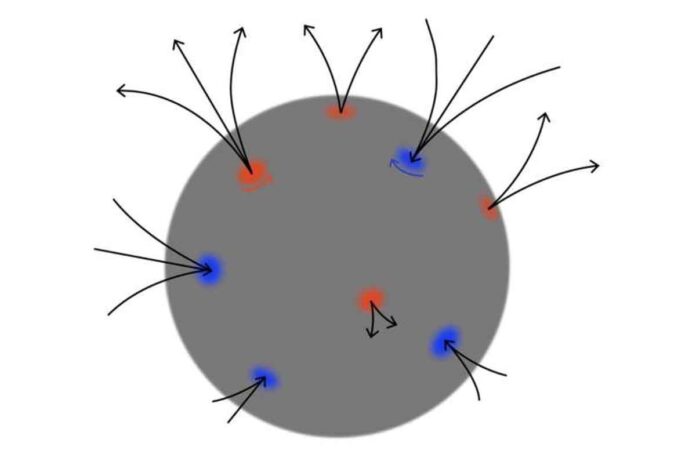Black holes are astronomical objects with extremely strong gravitational pulls that cannot be overcome by light. While the concept of light-trapping bodies has been around since the 18th century, the first direct observation of black holes occurred in 2015.
Since then, physicists have conducted a plethora of theoretical and experimental studies in order to better understand these fascinating cosmological objects. This resulted in numerous discoveries and theories about black holes’ unique characteristics, properties, and dynamics.
Researchers from Ludwig-Maximilians-Universität and the Max-Planck-Institut für Physik recently conducted a theoretical study to investigate the possibility of vortices in black holes. Their paper, published in Physical Review Letters, demonstrates that black holes can theoretically admit vortex structures.
“Recently, a new quantum framework for black holes, namely in terms of Bose-Einstein condensates of gravitons (the quanta of gravity itself),” one of the study’s authors, Florian Kühnel, told Phys.org. “Rotating black holes had not been thoroughly studied within this framework prior to the publication of our article. They may, however, not only exist, but also be the norm rather than the exception.”
Kühnel and his colleagues Gia Dvali and Michael Zantedeschi ran several calculations using existing physics theories, including the recently developed quantum model of black holes based on Bose-Einstein graviton condensates. Their main goal was to investigate rotating black holes at the quantum level to see if they would admit vortex structures.
“Since rotating Bose-Einstein condensates have been subjected to intensive laboratory studies, it is known that they admit vortex structure if rotated fast enough,” Kühnel explained. “We took this as an invitation to look for those structures in rotating black hole models as well—and we did find them.”
According to Kühnel and colleagues, a black hole with extreme spin can be described as a graviton condensate with vorticity. This is consistent with previous research indicating that extremal black holes are resistant to Hawking evaporation (a black body radiation thought to be released outside of a black hole’s outermost surface, or event horizon).
Furthermore, the researchers demonstrated that in the presence of mobile charges, the black hole’s overall vortex traps a magnetic flux of the gauge field, resulting in experimentally detectable signature emissions. The theoretical predictions of the team could thus open up new avenues for the observation of new types of matter, such as millicharged dark matter.
“Vorticity is an entirely new feature of black holes, which are fully characterised on the classical level (i.e., if one closes one’s eyes on their quantum structure) by three entities: mass, spin, and charge,” Kühnel said. “This is what we learned in school—until now. We demonstrated that vorticity is required.”
The existence of vortices in black holes, as the team hypothesises, could explain the absence of Hawking radiation in maximally rotating black holes. This theory may thus pave the way for new experimental observations and theoretical conclusions in the future.
Black hole vortex structures, for example, could explain the extremely strong magnetic fields that emerge from active galactic nuclei in our universe. Furthermore, they may be at the root of almost all known galactic magnetic fields. “We only recently discovered the field of black hole vorticity,” Kühnel added. “There are numerous important and exciting questions to be addressed, including those mentioned above. Furthermore, future gravitational-wave observations of merging black holes, each with a vortex (or multiple vortices), could pave the way for these novel and exciting quantum aspects of space-time.”

